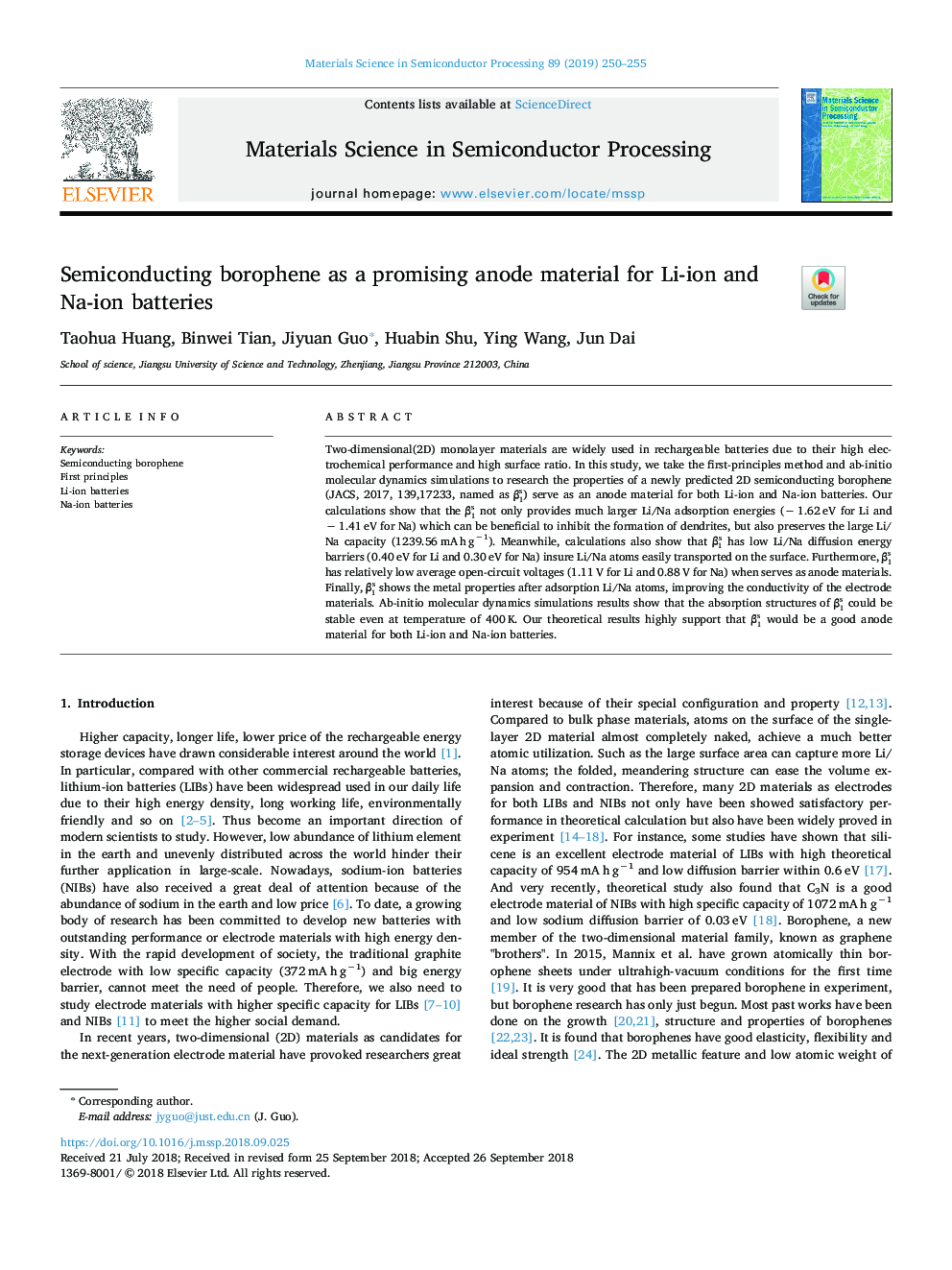| Article ID | Journal | Published Year | Pages | File Type |
|---|---|---|---|---|
| 11031460 | Materials Science in Semiconductor Processing | 2019 | 6 Pages |
Abstract
Two-dimensional(2D) monolayer materials are widely used in rechargeable batteries due to their high electrochemical performance and high surface ratio. In this study, we take the first-principles method and ab-initio molecular dynamics simulations to research the properties of a newly predicted 2D semiconducting borophene (JACS, 2017, 139,17233, named as β1s) serve as an anode material for both Li-ion and Na-ion batteries. Our calculations show that the β1s not only provides much larger Li/Na adsorption energies (ââ1.62âeV for Li and ââ1.41âeV for Na) which can be beneficial to inhibit the formation of dendrites, but also preserves the large Li/Na capacity (1239.56âmAâhâgâ1). Meanwhile, calculations also show that β1s has low Li/Na diffusion energy barriers (0.40âeV for Li and 0.30âeV for Na) insure Li/Na atoms easily transported on the surface. Furthermore, β1s has relatively low average open-circuit voltages (1.11âV for Li and 0.88âV for Na) when serves as anode materials. Finally, β1s shows the metal properties after adsorption Li/Na atoms, improving the conductivity of the electrode materials. Ab-initio molecular dynamics simulations results show that the absorption structures of β1s could be stable even at temperature of 400âK. Our theoretical results highly support that β1s would be a good anode material for both Li-ion and Na-ion batteries.
Related Topics
Physical Sciences and Engineering
Engineering
Electrical and Electronic Engineering
Authors
Taohua Huang, Binwei Tian, Jiyuan Guo, Huabin Shu, Ying Wang, Jun Dai,
